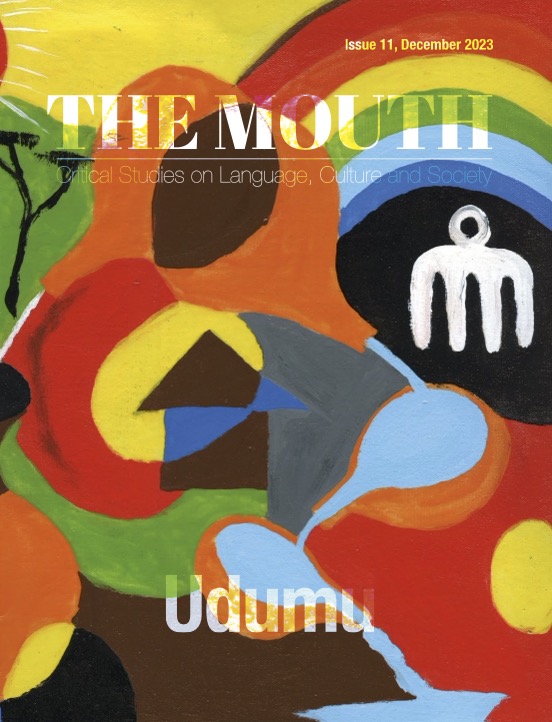Archive
-
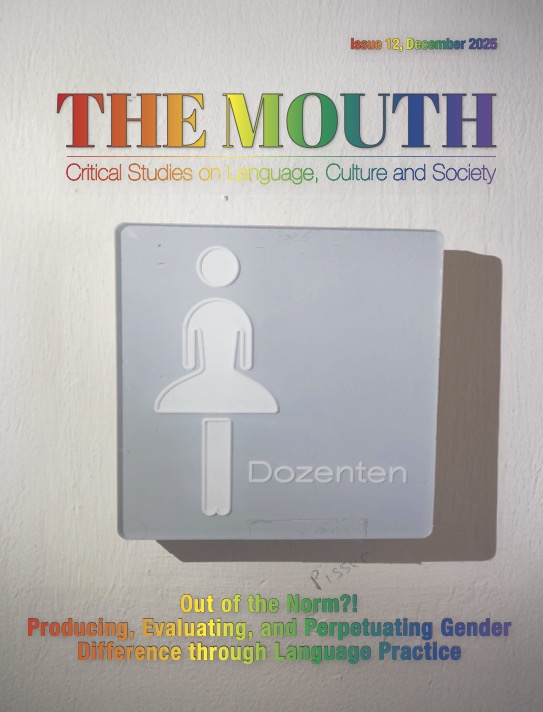
Out of the Norm?! Producing, Evaluating, and Perpetuating Gender Difference through Language Practice
Vol. 12 (2025)In this thematic issue, we explore how linguistic practices serve as essential tools for the performative production of social categories, with a special focus on gender. Drawing on different theoretical frameworks and examples from case studies of various speech communities and social realms, the contributions examine how gender is constructed through iterative speech acts, establishing some of these constructions as the norm, while identifying (and often devaluating) others as deviations. In this exploration, we concentrate on three distinct manifestations of the performative potential of language practices: Language structure, indexicalities and discourse.
-
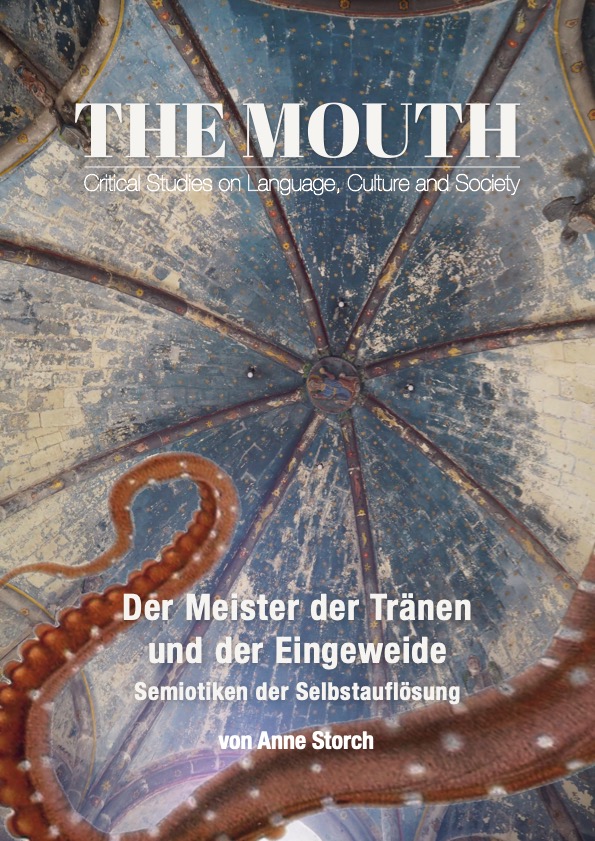
Der Meister der Tränen und der Eingeweide (special issue)
No. 9 (2025)Diese Arbeit ist aus der Auseinandersetzung mit dem Kontrafaktischen in der sprachwissenschaftlichen Forschung heraus entstanden: was wäre, wenn die Vorstellungen, die unsere Vorfahren (und die anderer Leute) hinsichtlich sprachlicher Praktiken pflegten, erinnert und beachtet würden? Was wäre, wenn die Perspektiven auf Kommunikation derjenigen Menschen, deren Spuren als Graffiti an Pilgerstätten und den Mauern alter Gebäude überdauern, ernstgenommen und nicht in Vergessenheit geraten wären? Dann würden wir vielleicht besser verstehen, dass es bei alldem – Sprache, Zeichen, Klang – auch immer um Erfahrung und Verwandlung geht und nicht nur um das Übermitteln von Botschaften. Das ist im Grunde nichts neues, aber der Versuch, Spuren dahingehend zu verfolgen, dass Auskunft über Sprache und Zeichen als Teil von Selbstauflösung – infolge von Pilgerschaft und Transformation – erhalten wird, ist es schon. Und so finden sich in den drei hier versammelten Texten ein Bericht über das Ausgilben aus dem akzelerierten Leben hinaus, eine Studie über das Schaben von heiligem Staub, der in enger Beziehung mit dem Klang von Gebet und Gesang steht und der aus sich aus einem Caritasgedanken heraus auflösenden Gemäuern kommt, und eine Untersuchung der Figur des Säulenfressers, der aus dem Inneren heraus Ordnung und Halt infrage stellt und uns daran erinnern mag, dass wir und unsere Gebäude am Ende wieder Gebrösel und Sediment sind.
-
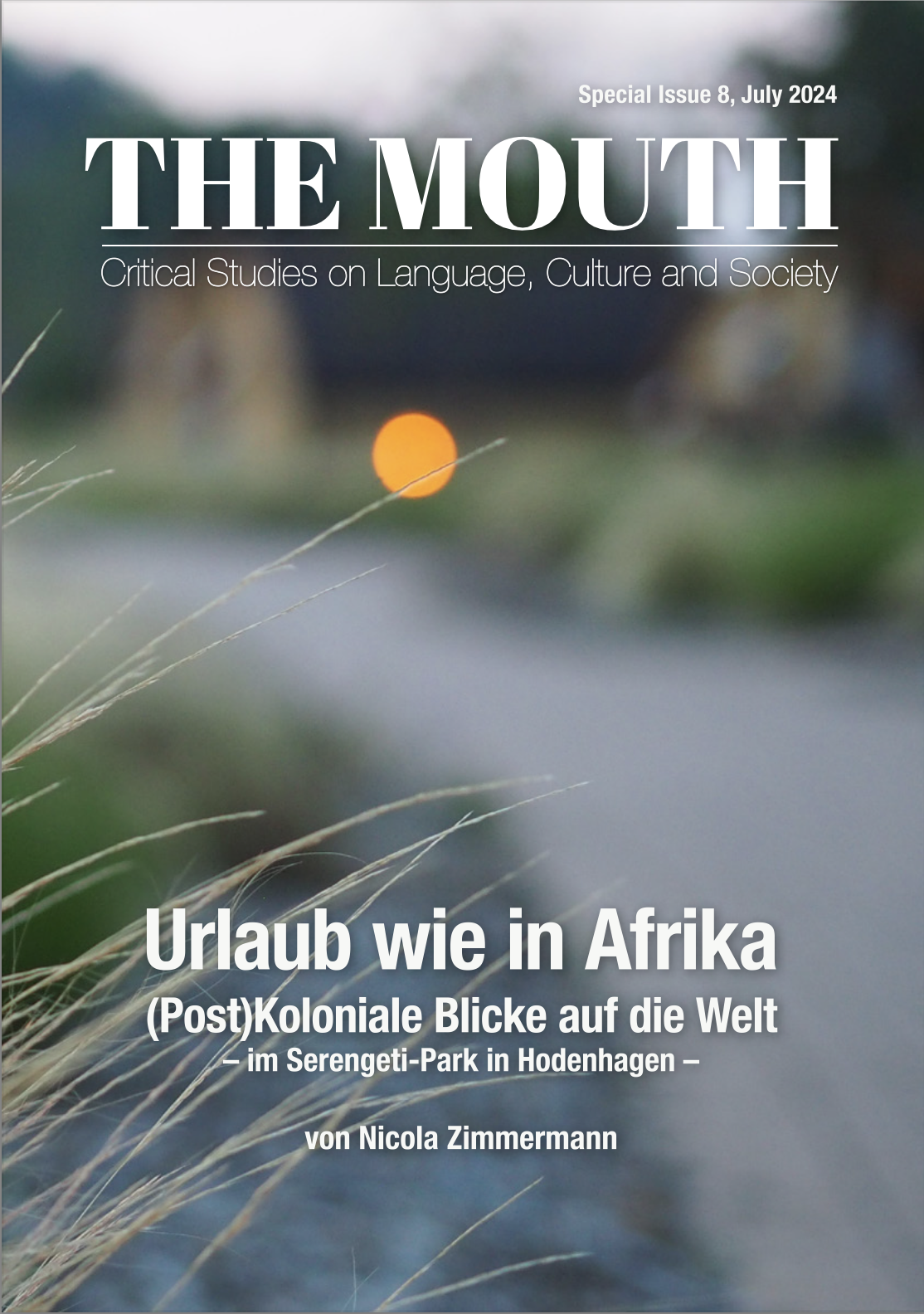
Urlaub wie in Afrika (special issue)
No. 8 (2024)Diese Arbeit untersucht, basierend auf eigenen Parkbesuchen, Interviews mit Besucherinnen und der Analyse von Parkmaterial, die (post)kolonialen Weltbilder, die sich im Serengeti-Park, einem afrikathematisierten Safari- und Vergnügungspark in Niedersachsen, manifestieren. Die Autorin analysiert die Darstellungen und Praktiken des Parks in ihren historischen sowie gegenwärtigen lokalen und globalen Kontexten und der Park dient als Ausdruck von Strukturen, die über den Park hinausreichen. Der Park inszeniert eine Weltreise, wobei er das außereuropäische Andere in leicht zu verstehende, konsumierbare Bilder verwandelt. An bekannte (post)koloniale Imaginationen anknüpfend wird Afrika (Hauptthema des Parks) als romantische, idyllische, mal menschenleere, mal von sorglosen, rückständigen Exoten bewohnte Landschaft oder als gefährliche Wildnis, in jedem Fall aber als allochrones Anderes dargestellt. Mit den imperialen Abenteuergeschichten, die der Park erzählt, referiert er auf nostalgisch verklärende Weise direkt auf die europäische Kolonialzeit, ohne diesen Kontext jedoch zu thematisieren. Die Parkbetreiber*innen positionieren sowohl ihre Besucher*innen als auch sich selbst als Abenteurer sowie als Retter von Tieren, wobei sie die Verantwortung des Globalen Nordens für Artensterben und Klimawandel nicht thematisieren. Während er den Wunsch nach einer Einheit von Mensch und Tier äußert, manifestiert der Park selbst eine ontologische sowie strukturelle Trennung und Hierarchie derselben. Die Machtverhältnisse zwischen Tieren und Menschen bleiben asymmetrisch, die kommodifizierte Nähe zu den Tieren auf das Erlebnis der Besucher*innen ausgerichtet. Zwischen proklamierter Wertschätzung Afrikas, Tierliebe und Naturschutz auf der einen und (post)kolonialen Narrativen und Strukturen, Verwertbarkeitslogik und Konsum auf der anderen Seite manifestiert und transportiert der Serengeti-Park ambivalente Blicke auf die Welt.
-
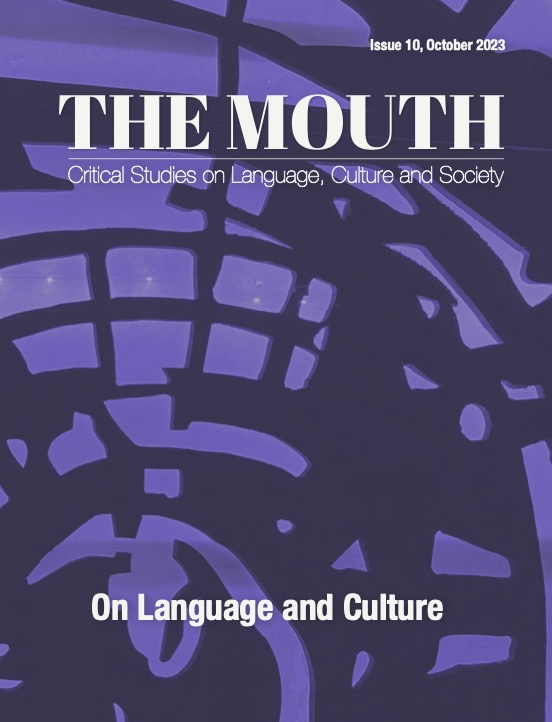
On Language and Culture
Vol. 10 (2023)It is a complicated, often contradictory and difficult process, but we do enjoy facing the challenge of leaving the “epistemic dungeon” by acknowledging specifically the individualism and artful voices of many contributors of The Mouth. What we appreciate each time we get to work on a new issue of our journal, is not a perfect academic style or finding the latest publication appropriately cited somewhere, but the original thinking and creativity offered to us, together with the possibility of connecting with diverse epistemic contexts, and learning something new and unknown as soon as we dive into the submitted texts. We were, and we are still amazed by diverse and thought-provoking papers we received, on a range of topics that are linked to linguistic and cultural practice – yet still outside of mainstream categories of linguistic anthropology or anthropological linguistics.
-
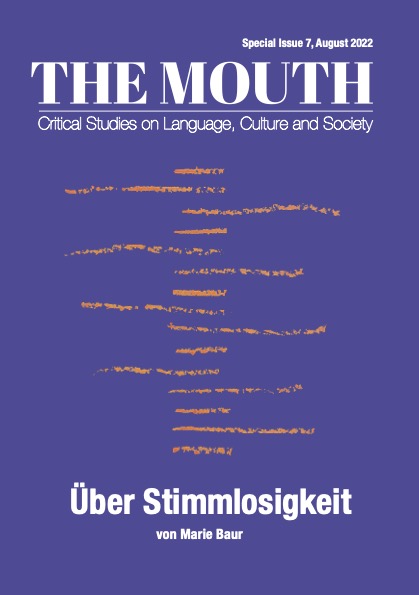
Über Stimmlosigkeit (special issue)
No. 7 (2022)Zwischen dem »Terror einer Sprache« und dem »Horror einer Stille« siedelt M. NourbeSe Philip den Grund ihres Werkes an. Ein »Ödland« eröffne sich dort, beschädigt von beidem: von Sprache wie auch von Stille. Dieses Ödland ist für Philip Grund dafür, Sprache als den Ausdruck von Erinnerung und Erfahrung anzuzweifeln und sie darauf aufbauend zu bewegen, zu verrücken, aus dem Terror und Horror, den Sprache darstellt, zu entrücken. Die vorliegende Arbeit will aufzeigen, wie Philips lyrische Arbeiten Zong! (2008), »She tries her tongue, her silence softly breaks« (1989) sowie der Roman Looking for Livingstone (1991) solch eine Sprachkritik aufnehmen und dieser entgegentreten, indem sie Sprache in Form wie in Inhalt unbestimmt umherirren lassen.
-
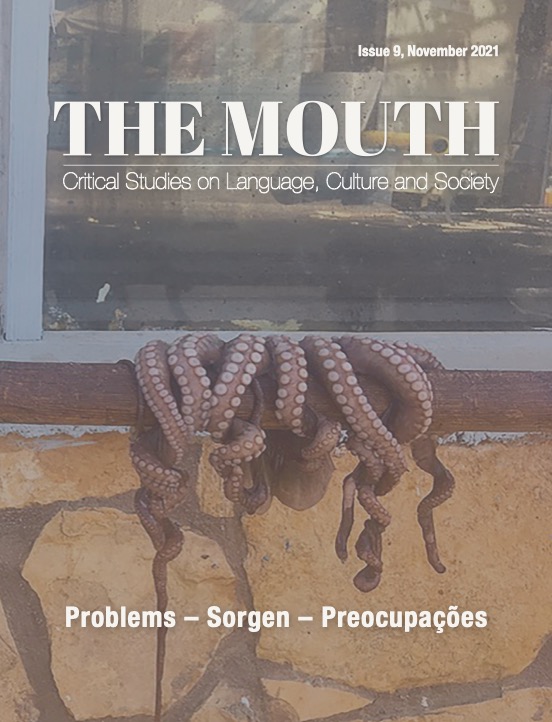
Problems - Sorgen - Preocupações
Vol. 9 (2021)All this could and should have been a time of reflection, of the sound of the tip of a pen moving over paper, of reading books that had been on the list for a long time, of chatting, of playing, of walking. Instead, it turned into a time of frantic screens, of noisy hoorays on the accomplished task of making the university more virtual and more efficient to the costs of all those who deserved better, of the neoliberal and also, unsurprisingly, of unabashed hatred and racism. This time witnessed the production of rubbish and destruction, the creation of plastic copies of feudal monuments, of senseless waste and needless carelessness – and actually, the production of more distance. This bad taste is what gets embraced and dealt with in some detail in this issue of The Mouth. We have put together a collection of papers and other contributions in different formats, which engage with questions around language, and the ways in which we can or cannot use our language, in which the way we speak has become problematic, or is addressing difficult situations. Oftentimes, people seem to choose alternative, artful, indirect or subversive ways of expressing pain, sorrow or critique. This is also reflected in the current issue, where problems are addressed in multimodal, discursive and creative ways. Calling the practices of colonialism and plunder by their name, entering into a conversation on the limitations of sharing in an impoverished community just next to luxurious holiday paradises, speaking of the denial of experiences of violence, writing about ruination and structural racism, addressing the one thing that capitalism produces most, namely garbage: these are the topics of the present issue.
-
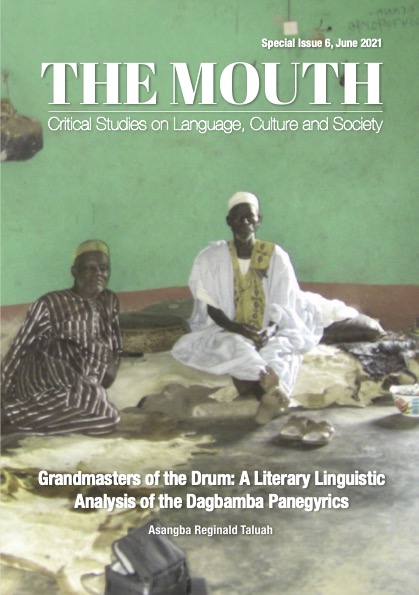
Grandmasters of the Drum: A Literary Linguistic Analysis of the Dagbamba Panegyrics (special issue)
No. 6 (2021)Since time immemorial, virtually all known cultures found it worthwhile or perhaps gratifying to express their beliefs and thoughts in diverse artistic forms. Prior to the invention of writing, the artistic products of language were generally passed down from one generation to the other by word of mouth: usually memorised and performed repeatedly on many occasions and gradually gets ingrained in the minds of the participants or the budding generations.
By far, the greatest creative achievement of the Dagbamba to say the least, is their praise poetry. Praise poetry is synonymous with the Dagbamba because they have a long history of conquests and kings passed on from one generation to the other; spanning centuries of their establishment of the Dagbon state in the 15th century. The Dagbamba praise poetry or panegyrics to be specific are orally composed texts that were constructed purposely to glorify Dagbamba kings or chiefs and also uphold historical accounts of the royals and the happenings in the annals of Dagbon in general. This research is therefore focused on the panegyrics amongst the Dagbamba of Northern Ghana. It explores the beliefs, values and ideas that surround the texts and examines the diverse distinctions and adaptations that pertain in the renditions of the panegyrics and the general contexts as a whole.
-
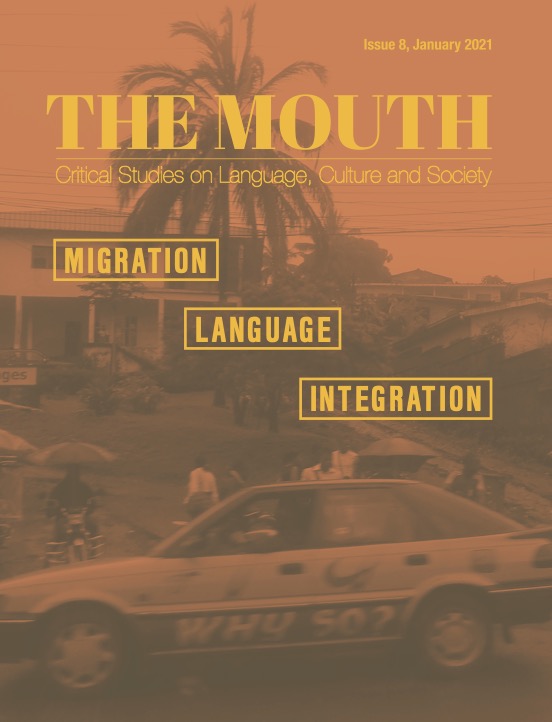
Migration - Language - Integration
Vol. 8 (2021)Language is at the heart of this issue of The Mouth and central to the triad migration – language – integration. All of the contributions to this issue focus on language and its intersection with migration and/or integration, and language also lies at the core of our own research. Migration – or to use a more neutral and inclusive term – mobility is considered to be the most decisive factor influencing life in the 21st century in a world characterized by cultural superdiversity. Whatever type of migration and migration itinerary a person pursues, has pursued or intends on pursuing, the process of learning of a new language or language variety, new registers, styles, and sociolinguistic patterns, is almost inevitable. A declared political aim of European countries and other countries in the global North is integration, inclusion and participation of immigrants permanently living in the country. This idea is based on the ideology of the nation state as a unit the members of which are essentially alike, i.e. having a common identity united in one territory and speaking one language. However, the suggested homogeneity is in fact imaginary, for several reasons.
-
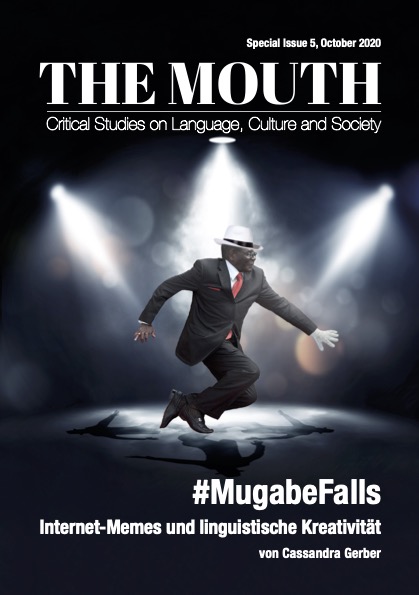
#MugabeFalls - Internet-Memes und linguistische Kreativität (special issue)
No. 5 (2020)Der virtuelle Raum bietet viele Möglichkeiten sich auszudrücken. Eine dieser Möglichkeiten sind Internet-Memes. Das können Bilder, Texte, Audiodateien, oder Videos sein, welche innerhalb einer Diskursgemeinschaft miteinander erstellt, verändert und geteilt werden. Dies geschieht vor allem auf sozialen Plattformen im Internet, kann aber auch in Chatprogrammen wie zum Beispiel „Whatsapp“ für Mobiltelefone in einem privaten Rahmen geschehen.
Exemplarisch verhandelt wird hier ein Internet-Meme, welches ich im Folgenden als das „Mugabe-Meme“ bezeichne. Dieses Meme entstand auf Grund eines Sturzes im Jahr 2015 am Flughafen in Harare des ehemaligen Präsidenten von Simbabwe, Robert Mugabe. Dieser war von 1987 bis 2017 im Amt des Präsidenten und zunehmend Kritik innerhalb und außerhalb seines Landes aufgrund seiner teilweise von Korruption und Polizeigewalt geprägten Politik ausgesetzt. Das Internet-Meme verhandelt wie bereits erwähnt einen Sturz des ehemaligen Präsidenten, da dieser gestolpert war. Während dieses Sturzes wurde er im Moment des Falls fotografiert. Dieses Foto wurde wiederrum verboten und die Journalist*innen vor Ort gezwungen, es von den Kameras zu löschen. Das Bild tauchte dennoch am selben Tag im Internet auf. Robert Mugabe wurde meistens mithilfe einer Bildbearbeitungssoftware ausgeschnitten und vielfach in neue Bildkontexte gesetzt. Das Internet-Meme erreichte globale Aufmerksamkeit und wurde in verschiedenen Medien thematisiert. Für mich ist einerseits interessant, wie man das Internet-Meme generell in einen Forschungskontext einbetten kann. Andererseits möchte ich untersuchen, in welcher Form das Internet-Meme als Ausdruck linguistischer Kreativität gedeutet werden kann. Hiermit ist im Folgenden nicht nur die kreative sprachliche Handlung im Sinne eines „engen“ Sprachbegriffs gemeint: Es geht nicht um Äußerungen. Unter „Sprache“ werden hier auch unter anderem Bildsprache und auch „Texte“ mit einbezogen.
-
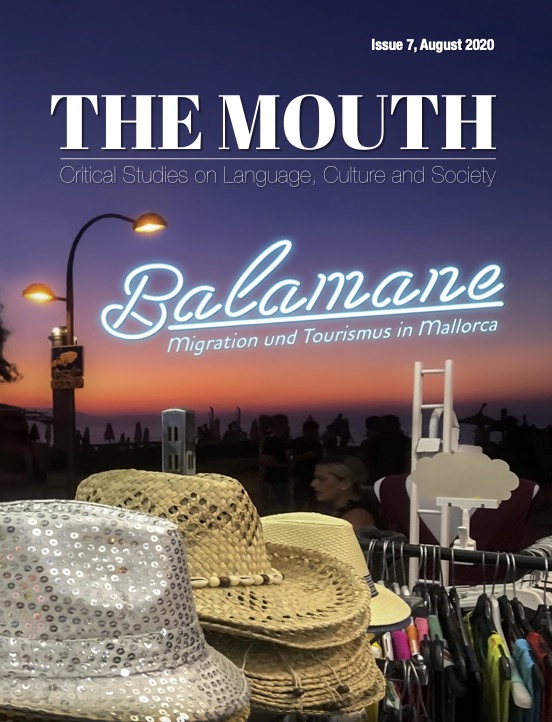
Balamane - Migration und Tourismus in Mallorca
Vol. 7 (2020)Der Balneario 6, besser bekannt als „Ballermann“ – ein paar Kilometer Strand mit der dazugehörigen Tourismusbebauung in El Arenal auf Mallorca, die das Bild des mediterranen Massentourismus prägen – gerät in diesem Band in den Fokus akademischen Arbeitens und musealer Präsentation. Es ist möglich, dass dieser scheinbar triviale Ort banalen Konsums durch seine unsachgemäße Behandlung in diesen unpassenden Genres fremd wird, ein wenig abenteuerlich vielleicht, oder zumindest doch ungewöhnlicher wirkt, als er landläufig eigentlich wahrgenommen wird. Tatsächlich gibt es „Ballermann“-Ableger allerorten, und Orte des Konsumtourismus erst recht. In den in diesem Band versammelten Texten und den ausgestellten Artefakten wird jedoch eine andere Perspektive auf die beliebteste Ferieninsel der Deutschen geworfen: Ein Blick, der vor allem sonst Ausgeblendetes, Ungeheuerliches, Transgressives und Unschönes miteinschließt, oder eben an den widersprüchlichen Seiten El Arenals hängen bleibt. Hier wird der „Ballermann“ zum Balamane – wie die senegalesischen Strandhändler, Haarflechterinnen und Türsteher ihn nennen und über ihn sprechen –, einem Ort, der für weit mehr als Sauftourismus steht und eher ernste Themen mit einspannt. Inklusion, Exklusion, Rassismus, Sexismus, Chancen(un)gleichheit, sozioökonomische Marginalisierung, Überleben. Und neben aller Schwere doch immer auch eine sehr persönliche und kurzweilige Note trägt.
-
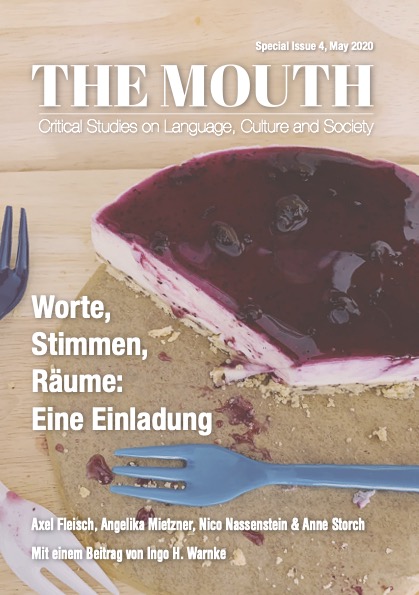
Worte, Stimmen, Räume: Eine Einladung (special issue)
No. 4 (2020)Das Denken über Sprache ist in gewisser Weise an das Denken über Raum gebunden; Sprechen über Sprache ist die Rede über Welt, und beides – Wort und Raum – fallen immer wieder zusammen. Und ohne die Erfahrung der Überquerung von Räumen, dem Übertreten von Grenzen, dem Durchschreiten von Welt, ist es unmöglich, die eigenen Möglichkeiten des Sprechens und Erkennens zu begreifen. Umso bemerkenswerter erscheint es, dass in der Linguistik, vielleicht besonders dort, wo sie sich mit außereuropäischen Sprachen befasst wie es die Afrikanistik tut, überwiegend eine Realität konstruiert wird, in der die Bewegung die Ausnahme, das Besondere, darstellt. Die Beobachtung der Dynamizität von Sprache evoziert Forschung über Kontakt, Varietät, Entlehnung, Wandel usw., wenngleich die Idee einer Sprache, die ein in sich geschlossenes System bildet und strukturell ungewandelt vor sich hin existiert, die viel verrücktere Vorstellung zu sein scheint. Aber so wird das nicht gedacht in der Sprachwissenschaft von den Sprachen dieser Welt in der alles seinen Platz auf der Sprachenkarte hat, typologisch sortiert und historisch eingeordnet werden muss. Die Frage Édouard Glissants (1997) nach dem Recht auf Opazität, der Normalität des Nichtverstehens im Kontrast zur Barbarei des Entschlüsselns und Fixierens, ist in der Afrikanistik wie auch anderswo in der Sprachwissenschaft für keinen ernstzunehmenden Vorschlag gehalten worden. Gleichzeitig bietet die Geschichte der Disziplin wie auch das System, in dem wir heute leben müssen, allerhand Grund, sich mit dieser Idee und den Erfahrungen der Entortung ernsthaft auseinanderzusetzen.
-

Teeth
Vol. 6 (2020)The Mouth is not about rotten teeth and dentures, and linguists only rarely become film stars, and probably do not figure prominently as dentists either. Yet, teeth are important in linguistics, cultural and social studies, and elsewhere. They are needed in order to produce interdental fricatives, and winning smiles while presenting an academic talk on the former. They can be mutilated and extracted, painted (black), whitened and neglected – all part of social performances of class and practices of indicating group membership. Teeth are shown to enemies in different ways than to friends when we smile. They can pain tremendously, but interestingly do not feel like anything at all when they are well. The cover theme of this issue of The Mouth is therefore used and to be understood in all of these manifold ways: teeth are a metaphor of speaking, of seeing oneself and being seen, and of society at large. Thus, this issue of The Mouth does not contain any contribution to the field of dentistry, forensics or phonetics. Instead, it offers a selection of sociolinguistic contributions which look critically at multilingualism, mobility, capitalism and academia.
-
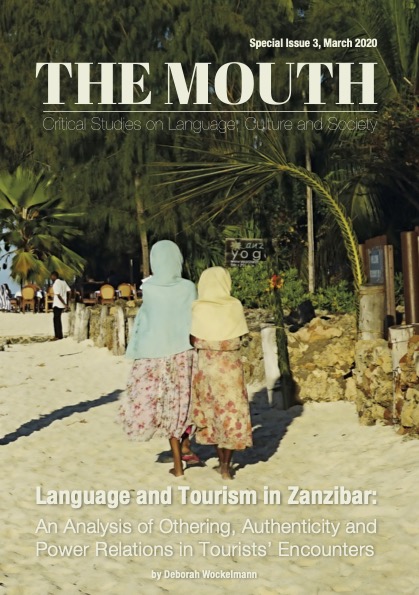
Language and Tourism in Zanzibar: An Analysis of Othering, Authenticity and Power Relations in Tourists’ Encounters (special issue)
No. 3 (2020)The dynamics of tourism reach into various spheres of life, and offer space for powerful societal transformation, multicultural exchange, for connections and likewise for demarcations between peoples. Tourism in Southern spheres does not only influence the Global South in terms of financial resources, but also brings about change in societies, landscapes and languages. In East Africa, Zanzibar depicts one of the most impressive tourist hotspots on the Indian Ocean. It is known predominantly for its multi-layered cultural‒historic formations and is highly regarded within the global tourism industry for its World Heritage Site of Stone Town as well as its coastal landscapes. The cultural diversity of Zanzibar is closely related to its linguistic diversity, which is heavily influenced by the flow of mass tourism. Because language not only fulfils a universal role as a pragmatic means of interaction but is also one of the most decisive markers of belonging used by human beings, it is one of the main pillars that helps mould tourism. It can not only denote internationality but also indicates bonds and boundaries between individuals. Language enables tourists in Zanzibar to communicate and get along with locals no matter which part of the world they come from. At the same time language, as a primary characteristic of human culture, reveals unwritten laws and traces of global history. Since this research is engaged with the interplay of tourism and language, language use in Zanzibari tourism raises some fundamental questions such as: Which role does language play in tourism?, Are tourists concerned with local languages, and if they are what are their intentions in learning them and their means to do so?, What do linguistic competence and language choice reveal about speakers and individuals who interact?
-
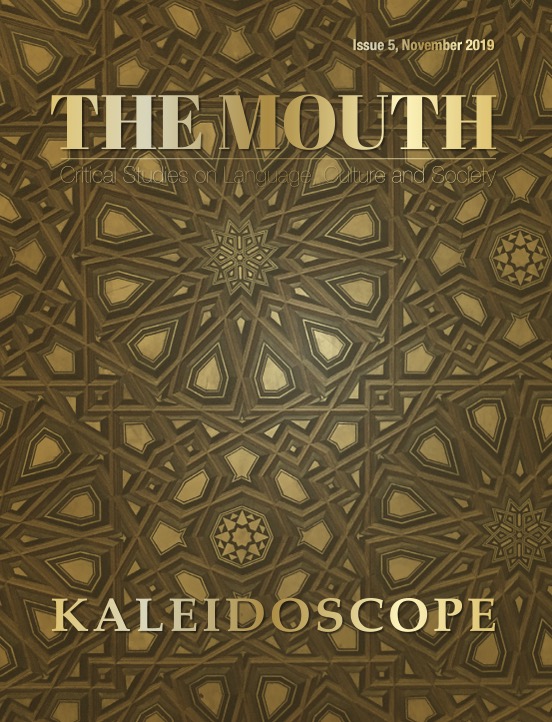
Kaleidoscope
Vol. 5 (2019)Arts in academia is a topic that has not yet found much acceptance, especially not in a discipline like linguistics. It is either considered as not scholarly enough, as not sufficiently objective, or as providing too many open questions and spaces. If artistic takes on an academic issue are considered, it happens usually in a special framework, such as a “science slam” or something termed “alternative” approach. Bringing art and academia together, without creating a limited space first, however, is a very fruitful and rewarding undertaking.
-
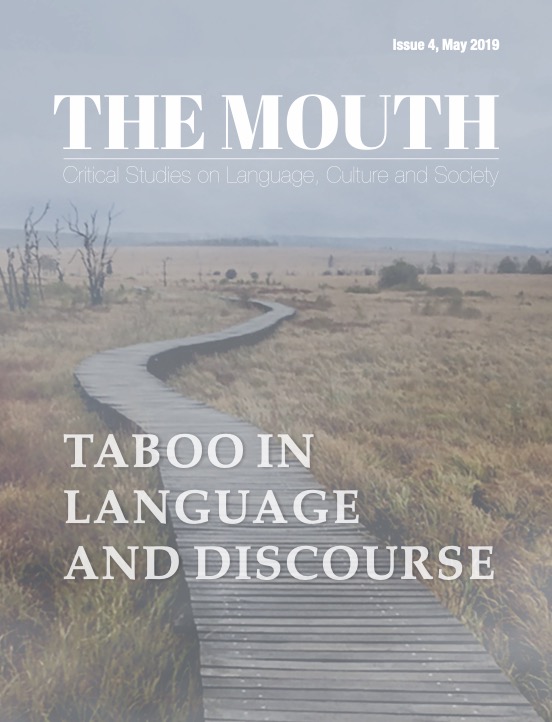
Taboo in language and discourse
Vol. 4 (2019)Every language reflects the practices of those who speak it, their surroundings, and livelihoods, what has to be avoided, and what is plainly forbidden and unmentionable — taboo across various languages and cultures. Taboo in language easily translates into practices of avoidance and secrecy. It also has discursive and performative dimensions. The papers within this issue are based on a meeting we organised in Spa, the region of the High Fens in Belgium (30 September – 1 October, 2017). The High Fens — a marshy area about an hour’s drive from Cologne — offered a propitious environment for the topic. The misty stretch of the moor was a reminder of the beliefs and taboos many of us grew up with. Under continuous rain, the treacherous paths, lined with withered blackberry bushes, seemed to have hosted a multitude of supernatural phenomena — the unseen presences of the dead and ever-living spirits, where land and water merge and one feels overpowered by Nature’s doom and gloom.
-
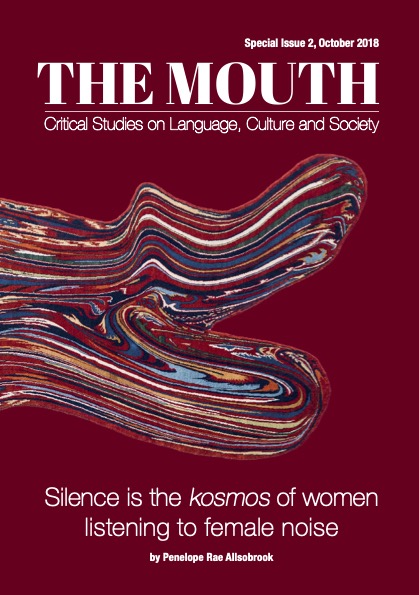
Silence is the kosmos of women - listening to female noise (special issue)
No. 2 (2018)This special issue presents a collection of stories which were entrusted to me. Its aim is, in making these voices available, to contribute toward a fuller picture of how South Africans understand and express their sexual identity now over twenty years into the post-apartheid context. Its aim, moreover, is to add to the documentation of responses to traumatic experiences of sexual violence, and in so doing, to challenge patriarchal discourses within South African society. The data is drawn from sixteen of the twenty-eight interviews I conducted in a twenty-eight day cycle, beginning in October 2015 and continuing later in February/ March 2016. Taking discourse into account as a social practice, I use this data in an attempt to provide a form of critical analysis, showing how my interview partners’ linguistic resources and communicative strategies reveal their ability to make choices in actively confronting the challenges they face.
-

Critical Youth Language Studies - Rethinking Concepts
Vol. 3 (2018)Numerous contributions to the description and sociolinguistics of youth languages offer explanations for the seemingly strange marginalization and subjugation of the subject. Youth languages are different because they are not part of main- streamlinguisticpractices;theyareplacedin the margins of communication. Yet youth is neither a marginal condition nor a rare phenomenon as such; the experience of coming of age is one that we all share. Just as youth is not a marginal condition, neither is youth language. Therefore, another overdue critical reassessment is needed to address the observation that youth languages have often been constructed as ‘special’ in terms of their linguistic creativity by linguists. The papers collected in this special issue each shed light on various aspects of youth language and thus enrich the study of such phenomena through critical methodology, perspectives or theoretical implications. Breaking away from classical linguistic approaches and offering alternative perspectives also means including various formats and ways of writing. This broadens the view on language as it not only includes the typical papers in academic writing style and thus makes other voices possible.
-
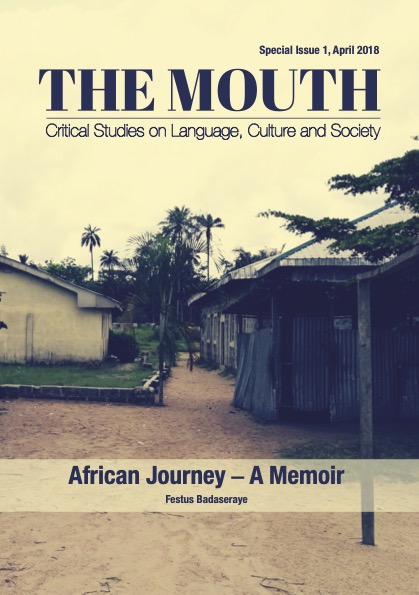
African Journey - A Memoir (special issue)
No. 1 (2018)Europe has become a desired destination for many Nigerians who are looking for a new life and for opportunities to support their families. As bewildering as migration to a foreign continent may seem and as frightening encounters within a foreign society may appear, so surely bewildering are the feelings of the immigrant in question, namely the undesired ‘stranger’. In his biography, Nigerian author Festus Badaseraye describes these personal experiences of migrating from Nigeria to Spain, turning uncertainty into security and stability. However, all along the journey he is caught between ‘here’ and ‘there’; between traditional values in Nigeria and his complicated role as a newly-arrived immigrant to Spain.
-
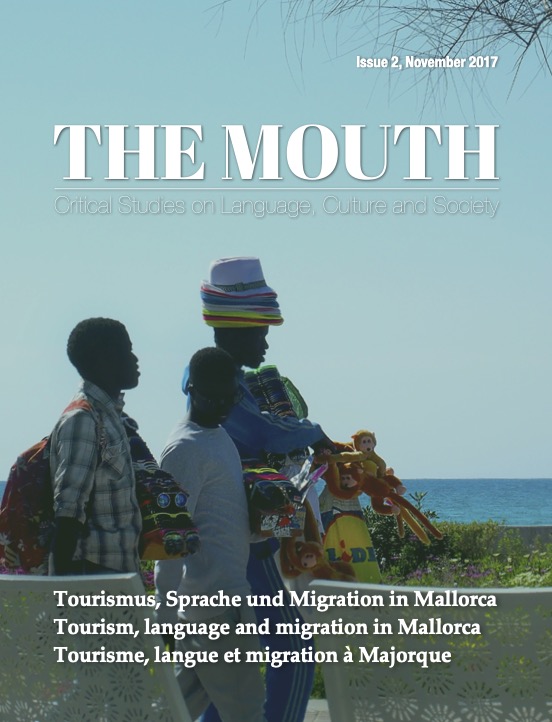
Tourism, language and migration in Mallorca
Vol. 2 (2017)In the present volume, the second in a series of explorative travel reports about the island of Mallorca, the authors discuss the changes affecting their own researcher personae while pursuing immersive field work where (mostly) German tourists encounter those involved in the precarious subsistenceeconomy that scaffolds the touristic universe: beach vendors, sex workers, bathroom atten- dants. These non-tourists are seekers from the Global South, variously from Nigeria, Senegal, or Mali, but also Indian and Chinese, and they are seeking refuge in the European touristscape in pursuit of minimal income, security, and escape from precarity. (Excerpt from the preface by Christiane M. Bongartz)
-
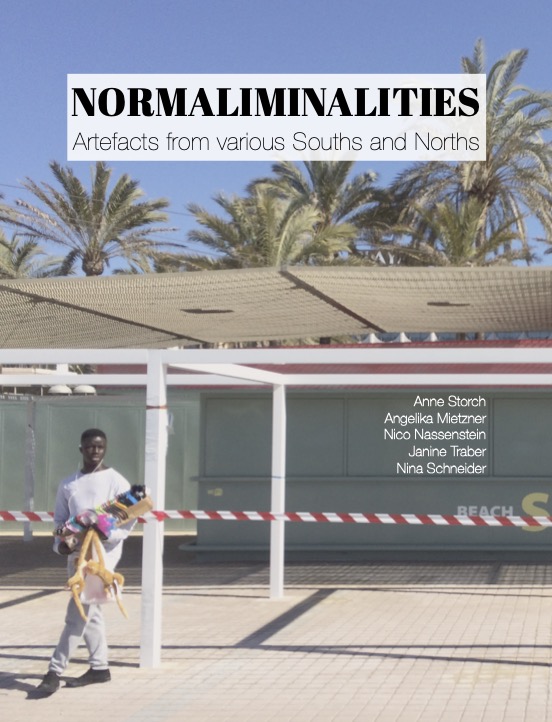
Normaliminalities - Artefacts from various Souths and Norths
Vol. 1 (2017)This volume is the result of various discussions, strands of work and cooperation with others. It has been inspired by a project on ‘tourism and ruination’, focusing on Kenyan beaches, as well as by debates on the ‘Global South’ and its imagined opposite, the ‘Global North’, and various attempts to construct and deconstruct such labels at our homeuniversity in Cologne, as well as in Brazil, Uganda, Egypt, Spain, South Africa, among others. The outcome is a diverse and decidedly hybrid collection of texts and images that invite the reader to reflect on the need to move away from fixed labels, static concepts and binary oppositions, and look at the space in between instead.
The published texts and images are part of an exhibition which was shown at the University of Cologne in June 2017 during a conference titled ‘The Global South on the Move’. Further materials and images on the exhibition and an installation on the university campus can be found in the blog of The Mouth.
-
Blog/Vlog
A colorful collection of blog and vlog contributions
-
Book Reviews
This is a compilation of all book reviews published in The Mouth Journal over time
-
Podcast
Our podcast series features a diverse mix of interviews, conversations, readings and audio books

